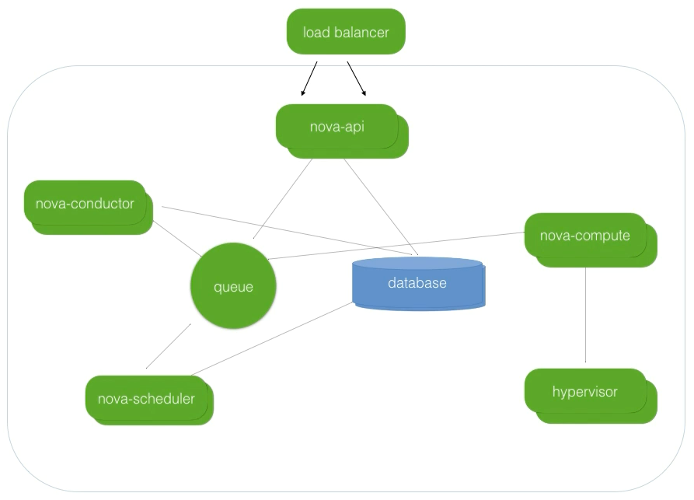Section 14: Multi Node Design and Scaling Openstack
51. Scaling Openstack
https://www.udemy.com/course/openstack/learn/lecture/6800910#overview
- Walmart runs on Openstack
- Where to put what?
Scaling Openstack
- Horizontal Scaling
- Scale by adding more machines into your pool
- Vertical Scaling
- Scale by adding more power to existing machines
- CPU, RAM
- Scale by adding more power to existing machines
How Openstack Components Scale
- All components use REST
- Load Balance using HA Proxy using a single endpoint
- Databases do not scale naturally
- Can use Active/Passive
- Instead use Galera for clustering.
- Message Queue has it’s own clustering method
- RabbitMQ, not RappidMQ
- Non-API components offer built in support for scaling
- Neutron, swift, proxy, L3
52. Compute Node
https://www.udemy.com/course/openstack/learn/lecture/6809170#overview
Compute node requires
- Services
- Nova compute
- Neutron
- Hypervisor
- Compute
- High CPU and RAM
- Storage
- External
- Distributed
- Direct
- Fast/performance
- Loss of data = no return
53. Network Node
https://www.udemy.com/course/openstack/learn/lecture/6809800#overview
54. Storage Node
https://www.udemy.com/course/openstack/learn/lecture/6809822#overview
- Different types of storage should be on different nodes.
55. Controller Node
https://www.udemy.com/course/openstack/learn/lecture/6810094#overview
- provides front door.
- Most API endpoints run on Controller
56. Multi Node Design & Minimum Node Requirements
https://www.udemy.com/course/openstack/learn/lecture/6810186#overview
- 2 node
- controller
- compute
- 3 node
- controller
- compute
- network
- 4 node
- controller
- compute
- network
- storage
- Glance
Node Requirements
add image
Section 15: Expanding the Cluster: Adding compute
57. Preparing the node

